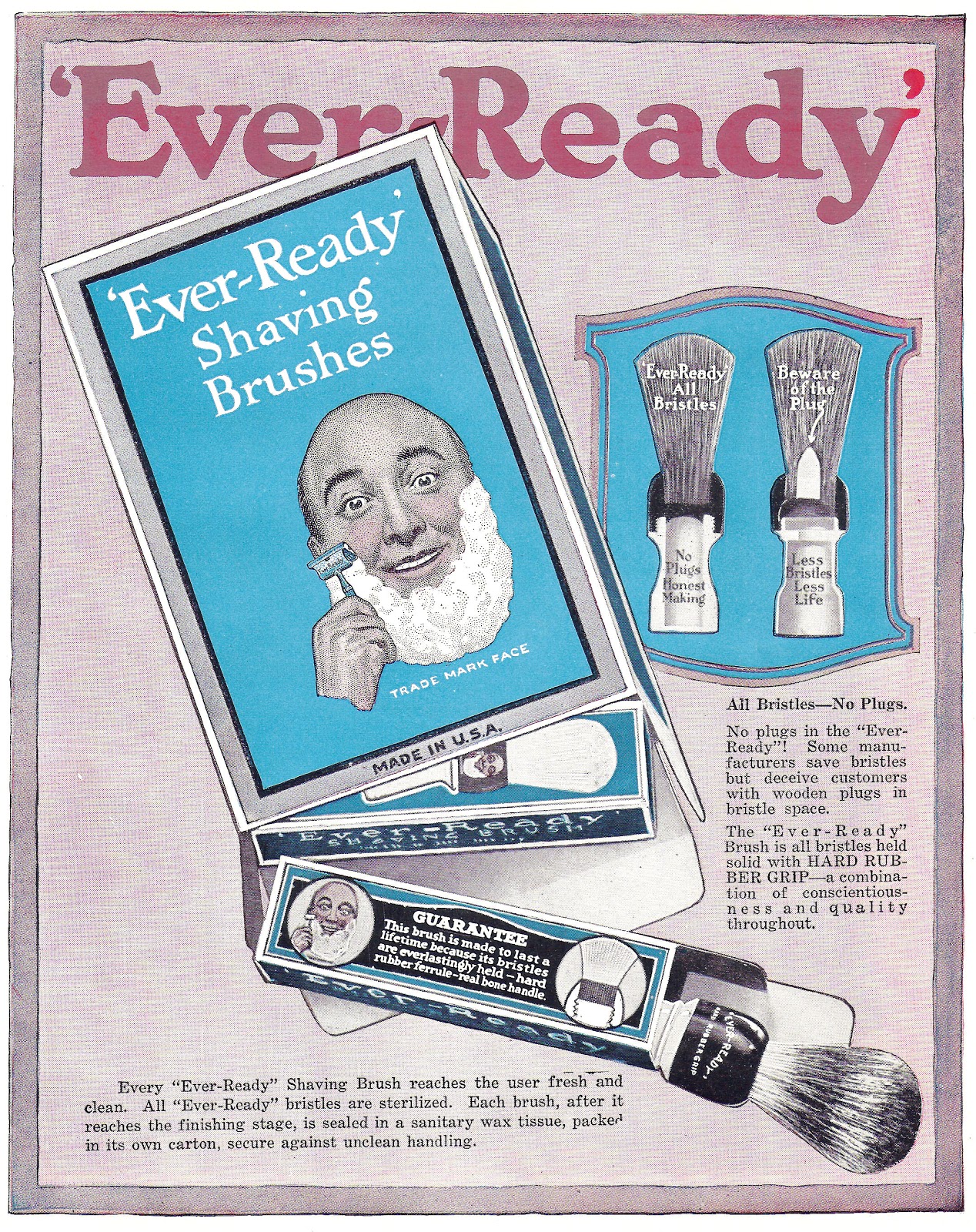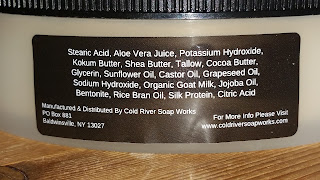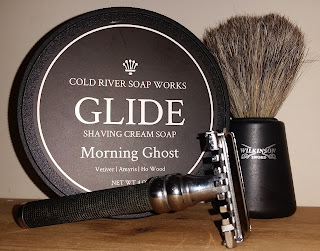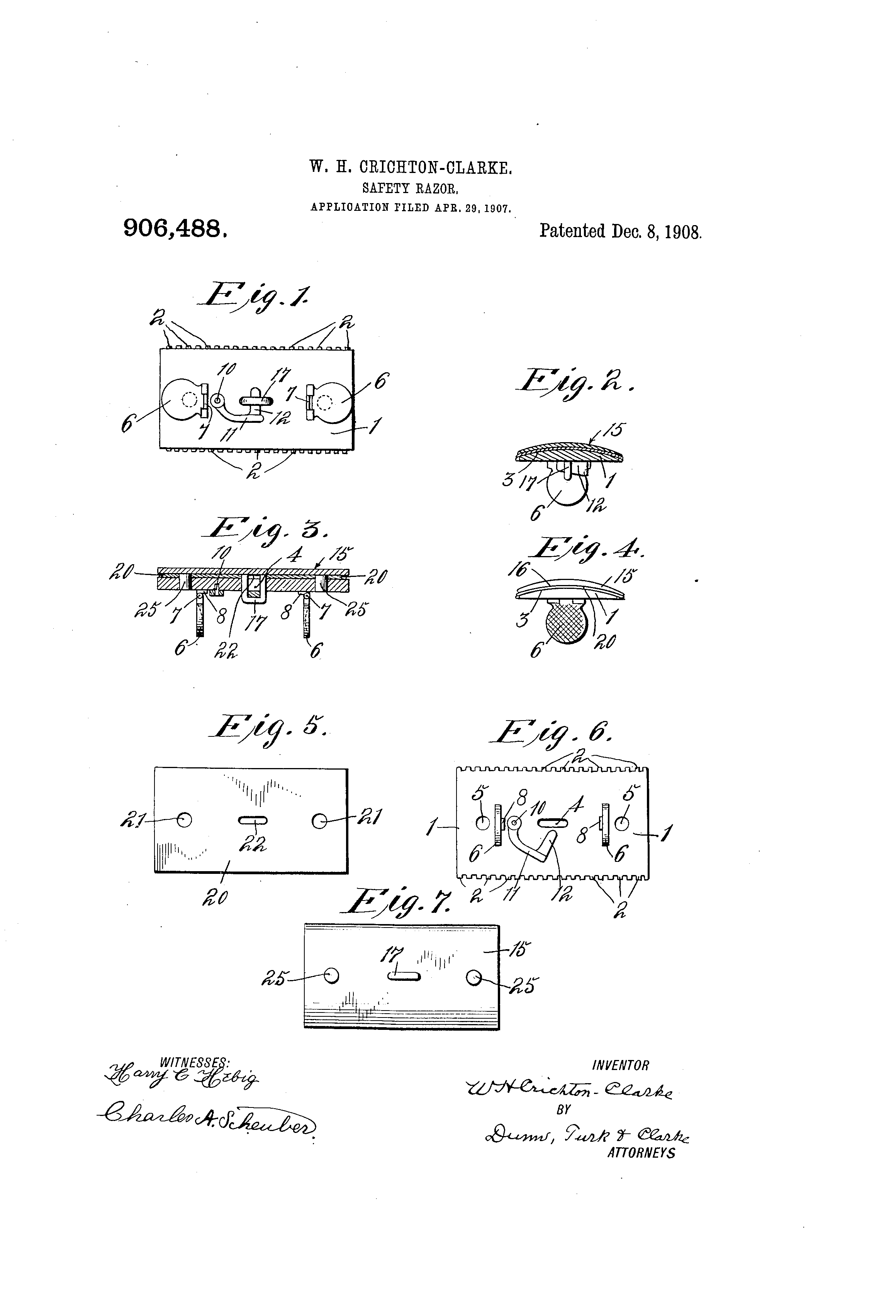One thing is the neat looking vintage packaging shown in the advertisement, another and more intriguing thing is the cross sections. The “less honest” brush with the plug shows a way of using less hair in a brush of a given diameter that I’ve not even imagined before… I just assumed less dense brushes were simple less well packed.
Makes you wonder about the ‘glue plug’ one sometimes sees in cheap grocery store brushes over here… is it big because manufacture and quality control is sloppy, or to hide the fact that it’s a loosely packed brush?
Tag Archives: Gear
European vending machine safety razor
Some weeks ago I was made aware – through a post on my favorite shave forum – of the fact that you used to be able to buy double edged safety razors in vending machines in Europe up until the early 1980’s. Despite living in Europe – well, Scandinavia – this was news to me. Granted, I didn’t start to shave until the late eighties, but still… possible they were only available in Germany; at least that is the one place I can find references to actually seeing one.
Sadly, apart from some pictures I found online, I know virtually nothing about this one apart from that I can gleam from the photos.
- It’s cheaply made, for starters – both the top cap and base plate is stamped sheet metal.
- Top cap have a riveted screw to secure it to the handle, pressed ridges for added strength, as well as half punched out “hanging chads” for locating the blade.
- The base plate is likely made from a simple stamping die – one punch and done.
- The handle seems to be the one part that has any ‘real’ machining done to it – it’s likely made from hexagonal stock, with one end rounded off, the other turned down to a cylinder and tapped for the screw thread.
- The handle is likely the most durable part of the razor – found one shaver online who like to use it with modern heads due to the weight of it.
I wish I know more about it… or even had one. If I had access to a half decently equipped metal workshop I could probably make some – as could any semi-decent machinist with a small press and a lathe – but there is no marked for a semi-disposable DE razor in this day and age.
Cold River Soap Works’ Glide Morning Ghost Cream – initial thoughs
Recently I got PIFed a tub of CRSW Glide Morning Ghost Cream Soap – thank you again Ricardo, for thinking of a European cut off from american artisan soaps by steep postage and import fees – and so far I’m pretty impressed. The scent is unique among my soaps; it’s my only vetiver soap so far.
If my fellow shavers on my favourite shave forum is anything to go by, Larry at CRSW have pretty much nailed it with the formulation for his GLIDE base – everyone seems more than pleased by the soaps qualities as a shave soap – the scents are more of a VMMW, but I can say with confidence that as far as my nose goes (and my Better Half’s too) he nailed it with Morning Ghost – I can’t speak for his other scents.
My first attempt with it taught me two things; load sparingly, and it’s a thirsty soap. Thick, heavy, slick lather, almost like putting toothpaste on… great post shave feel though, so thumbs up there.
Clemak safety razor

I do think that this advertisement is trying to push the idea that you could strop the Clemak once a week and have seven days of satisfying shaves. There are strong indications online that the Clemak used blades similar enough to the various GEMs and EverReady razors to be able to take a modern GEM blade – and the old style GEM blades were close enough to old wedge blades to take several rounds on the strop before wearing out.

Clemak was offered up – at least initially – as the cheaper and more British alternative to expensive safety razors, even if (as we’ll see later) it cost more than twice of the advertised five shilling if you wanted the full kit and kaboodle.
I figure we should go on a tangent right here for those less than familiar with old British coinage; one guinea was originally a gold coin worth one pound sterling, which was not minted after 1816. The name lived on and at the time of the Clemak it was referring to a value of one pound and one shilling – or about 21 shillings – which would be 1.05£ today (and keep in mind that the British resisted decimal currency because they figured it would be too complicated according to some of my sources). The guinea had an aristocratic overtone; professional fees and payment for land, horses, art, bespoke tailoring, furniture and other luxury items were often quoted in guineas – hence the question “Why pay a guinea?” – or in other words; why buy a luxery razor when the Clemak is just as good and affordable?
The images used in the advertisements points to the Clemak coming with an optional strop, as well as a selection of blades.
If you wanted to go all out – the razor, a dozen blade, the stropping machine, and a hide strop – you would have to come up with 10 shilling 6 pence – or around 97GBP (135USD) when adjusted for inflation and the change to decimal currency. Not cheap by any means, but nowhere near the prices we have to pay for a high end razor today – and still just half of the one guinea they wonder why you should spend.
Luxshave brushless cream advertisement
A trio of magnetic razors
It’s been a while since I deep dived into the weird world of magnetic razor patents.. so here goes:
Butler Ames patented a razor in 1917 that he claimed was a “new and useful improvements in magnetic razors”.
His razor was – as far as the drawing goes – simply a razor head attached to a horse shoe magnet. Attached BY magnet, in as far as the description describes it:
While the shape of the magnet may be varied within the scope of the present invention, it only being essential that one or more poles be dispose in such manner as to attract the parts and hold them together, I prefer to employ a U-magnet inasmuch as it affords two spaced pole pieces and also affords a handle which is very convenient in shaving.
At the same time Mr Ames also applied for and got a patent for another method of attaching the magnet to the razor head.
To quote Mr Ames from his patent description:
Another cardinal feature of the invention comprises means for rigidly mounting the guard member 6 upon the magnet 1 and at the same time permitting the ready withdrawal of the of the guard member and mounting means from the magnet. The preferred embodiment of the mounting means, according o the present invention, comprises pole pieces 7 adapted to fit over the ends of the as shown in steel or other magnetic material.
But Mr Ames ingenuity hadn’t run dry with two different ways of attaching the magnet to the razor – so he filed a third patent at the same time. This one was intended to make it more difficult for the razor head to tilt on the handle.
To describe this iteration in Mr Ames’ own words;
In the present embodiment of my invention the base or guard member is preferably formed of steel, and as this is a magnetic material I preferably provide means for preventing magnetic flux being shunted from the cap member through the base member, inasmuch as the attraction exerted upon the cap member by the magnet is decreased in proportion to the amount of flux shunted from the cap member. For this purpose I provide bushings of non-magnetic material between the poles of the’magnet and the of collars 16, these collars also serving an– other useful purpose, as will now be described.
In using the device there is a certain amount of pressure exerted on the edges of the guard member which tends to tip it about the central axis of the poles 11 and 12.,
By forming the collars 16 of considerable thickness, bearing surfaces 17 may be provided at their upper ends upon which the guard member may rest throughout a considerable area. Owing to this considerable area and owing to the fact that it extends well out toward the edges of the guard member, the guard member when positioned thereupon is rigidly held in position.
For being a trio of patents covering magnetic razors, the patents Mr Ames applied for and received are blissfully free of woo-woo. No mention of magically keeping the blade sharp, no claims to make better shaves, no rambling of magnetism making the hairs easier to cut or nothing like that… just using magnets to keep the razor together.
Mr Ames took a fourth patent in 1919, that built on his magnetic razor patents; a “new and useful improvements in packages of razor parts”.
Basically a way to pack one of his magnetic razors along with a stack of blades in a small, specially shaped tin. Or as the more verbose patent description states it:
It is the principal object of this invention to provide for the package of disassembled razor parts in small, light and very. compact compass, in such shape as to facilitate packing or carriage on the person under any and all conditions of service. It’is a further object of the invention to provide’ in the package as art thereof, a blade package adapted to facilitate the compact packing of a plurality of blades and to protect their cutting edge or edges until such time as they are successively removed for use.
It would have made a wonderful and compact travel razor kit to be sure – just one I would keep well away from anything that magnetism may affect.
Mr Ames patented a fair number of other things too; magnetic cores, lamps, distilling apparatuses, a reciprocating apparatus… but as far as I can tell he dabbled no further in razors.
Slumming it – experiments with various types of soaps and no brush
Last week I was running a little experiments; lathering soap without the benefit of a brush, as well as trying more common soaps – basically just put soap on face, rub to lather and shave with a BiC disposable. This was in part inspired be a comment someone made a few weeks ago on my favorite shave forum, partly inspired by curiosity (the things I do sometimes…).
First I tried with my trusty Arko Shavestick; result were a very thin layer of lather little less cushioning than when I use it with a brush, but quite acceptable – if you’re used to canned goo at least.
Second out was using Prairie Creations’ Goat Soap hand soap. Results were… okay, if you’re not used to proper shaving. Thin and patchy, didn’t want to stay put on my face. Glide but no cushioning at all. Something like a cream soap might have yielded better results, but I used the bar I had handy.
Last out was my regular shower gel… and I have to admit, the shave was slightly better than the hand soap, and almost on level with one of my brushless creams; glide but no cushion, and no post shave effect at all. I know people who shave in the shower with shower gel, and after giving it a go I pity them.
As to summarise… well, apart from the “what am I doing?”, it shows that you can shave with virtually any soap… it just wont be as good as a proper shave.
If you’re going on an extended hike and can’t find the space to pack a brush, a stick of Arko can suffice to give you a half decent shave while doubling as a general soap – while a general soap likely wont do double duty as a shave soap. But if you’re that hard up for space, why bring a razor?
A little too disposable – yet another old patent
If I told you that there is a patent for a disposable razor that is not only hygienic and sanitary, comes with lather and styptic, and that furthermore
is complete in itself and can be made readily available to the medical profession, in hospitals, offices, or on the highway miles from such olices and hospitals.
It can be made readily attractive for use by women as well as men, dispensed in stores of all kinds, hotels, highway bus and air stations in connection with all modes of transportation, beauty parlors and other places of business.
what would you say? Wondering where you might get hold of some of them, right?
There is just one problem… despite the fact that Mr Edward H Lyon applied for a patent in 1949 and got it granted five years later, it seems it never really took off. In part, I suspect, since it was mostly constructed out of paper or other inexpensive material – the only metal part was the blade – and by the description it would be hard to see it surviving more than a single shave. In essence, it was the forerunner to the modern day flimsy plastic disposable; just 40-50 years too early.
The razor was to be sanitized and packaged in a transparent, sterile bag with a supply of beard softening material, such as shaving cream, a blood coagulator such as a styptic pencil, and if desired an after-shaving preparation such as powder or the like inserted into the hollow handle to stiffen it during shipping.
Yes, the razor was expected to be so flimsy the handle needed support during shipping – how it were to stand up to actual shaving is anybody’s guess.
As for the description of the drawing;
Fig. 1 is an exploded View of a razor consisting of a holder and a blade in accordance with the present invention;
Fig. 2, a front elevation of the same in a bag;
Fig. 3, an end elevation thereof;
Fig. 4, a section on the line 4-4 of Fig. 3;
Fig. 5, a top plan view;
Fig. 6, a perspective of a modied form of handle;
Fig. 7, the blank used in making the handle of Fig. 6;
Fig. 8, a perspective of the tape and securing means as shown in Fig. 6;
Fig. 9, a fragmentary vertical section through a head similar to that of Figs. l to 5 but designed for a single-edge razor blade; and
Fig. 10, a similar fragmentary section for another type of single-edge blade.
I like the fact that Mr Lyon planned for not just DE blades, but two kind of SE as well. I don’t like the implied fragility of the handle though, and I have no idea how well a razor shaped from paper material would hold up to shaving.
“Handle-less” safety razor patent
Way back in 1907 Mr William H Crichton-Clarke patented an improvement in safety razors on behalf of the Gillette Company. William had – as far as I can tell – two other shaving related patents; one for a simplified safety razor with fewer parts than the Gillette Old, and one for a blade-sharpening mechanism to hone the edge of razors blades.
The patent I’m having a look at today is one that would produce a very, very small razor consisting of basically nothing more than a top cap and a bottom cap with a blade fastened between them. Or in William’s own words;
…a strong, simple, durable, and inexpensive safety razor which is small and compact in construction, so that it can be carried conveniently in a vest pocket or the like.
The main claim of the invention is to have a razor with two folding handles that lie flat when not in use as shown in the drawing, and which can be held between thumb and index finger when shaving. For those who thinks that looks and sounds vaguely familiar, I covered a tiny little travel razor back in May of 2015 that works in much the same manner – so while the manner of execution is different, at least the concept got into production at one point.
Update: for more on the tiny little travel razor, see this post.
Zadig & Voltaire – This is him! quick review
So I have scored a free sample of Zadig & Voltaire “This is him!” EdP, and it passed the Better Half’s nose with flying colours.
It’s a pretty woodsy scent, with a lingering topnote and a sustained base. Grapefruit, black pepper, incense, sandalwood and vanilla might sound like an odd mix – at least it do to me – but it works well. It’s fairly intense – in that a little goes a looong way – and have significant staying power; 8 hours after putting it on it smells no different than when applied.
Some might find the scent aggressive, but according to my Better Half it’s assertive – marking position and presence. For some that might be a turn-off, for others a turn-on.
Fall and winter should suit this EdP fine, I do believe it’s a little heavy for spring and summer. YMMV off course.





















